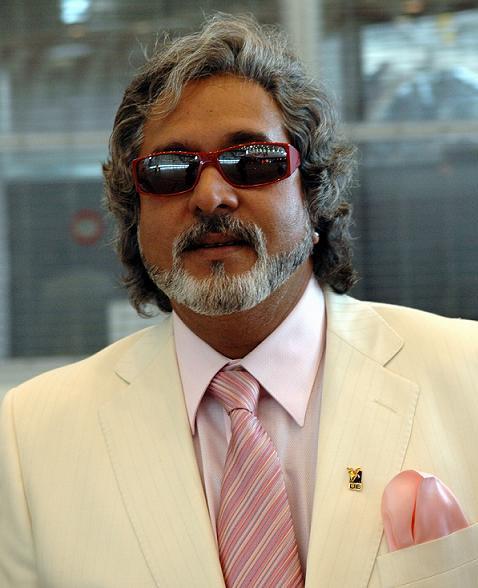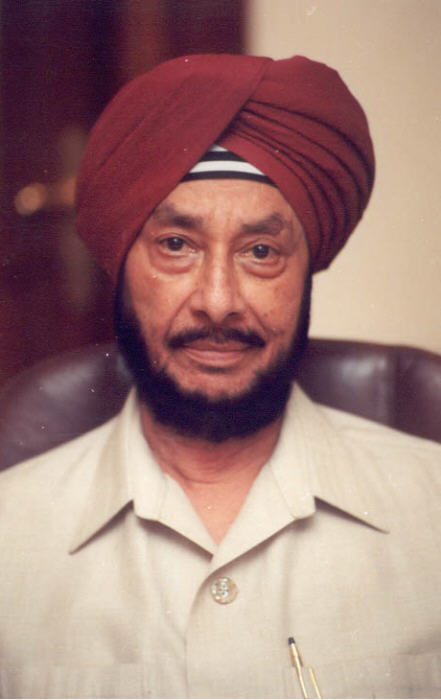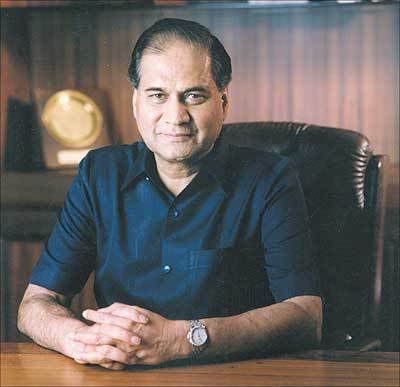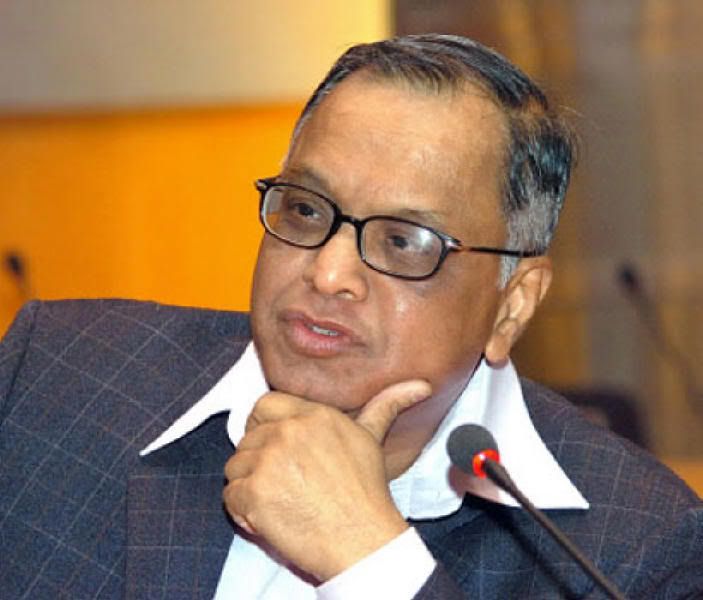
Born: September 27, 1907
Died: March 23, 1931
Achievements: Gave a new direction to revolutionary movement in India, formed 'Naujavan Bharat Sabha' to spread the message of revolution in Punjab, formed 'Hindustan Samajvadi Prajatantra Sangha' along with Chandrasekhar Azad to establish a republic in India, assassinated police official Saunders to avenge the death of Lala Lajpat Rai, dropped bomb in Central Legislative Assembly along with Batukeshwar Dutt.
Bhagat Singh was one of the most prominent faces of Indian freedom struggle. He was a revolutionary ahead of his times. By Revolution he meant that the present order of things, which is based on manifest injustice must change. Bhagat Singh studied the European revolutionary movement and was greatly attracted towards socialism. He realised that the overthrow of British rule should be accompanied by the socialist reconstruction of Indian society and for this political power must be seized by the workers.
Though portrayed as a terrorist by the British, Sardar Bhagat Singh was critical of the individual terrorism which was prevalent among the revolutionary youth of his time and called for mass mobilization. Bhagat Singh gave a new direction to the revolutionary movement in India. He differed from his predecessors on two counts. Firstly, he accepted the logic of atheism and publicly proclaimed it. Secondly, until then revolutionaries had no conception of post-independence society. Their immediate goal was destruction of the British Empire and they had no inclination to work out a political alternative. Bhagat Singh, because of his interest in studying and his keen sense of history gave revolutionary movement a goal beyond the elimination of the British. A clarity of vision and determination of purpose distinguished Bhagat Singh from other leaders of the National Movement. He emerged as the only alternative to Gandhi and the Indian National Congress, especially for the youth.
Bhagat Singh was born in a Sikh family in village Banga in Layalpur district of Punjab (now in Pakistan). He was the third son of Sardar Kishan Singh and Vidyavati. Bhagat Singh's family was actively involved in freedom struggle. His father Kishan Singh and uncle Ajit Singh were members of Ghadr Party founded in the U.S to oust British rule from India. Family atmosphere had a great effect on the mind of young Bhagat Singh and patriotism flowed in his veins from childhood.
While studying at the local D.A.V. School in Lahore, in 1916, young Bhagat Singh came into contact with some well-known political leaders like Lala Lajpat Rai and Ras Bihari Bose. Punjab was politically very charged in those days. In 1919, when Jalianwala Bagh massacre took place, Bhagat Singh was only 12 years old. The massacre deeply disturbed him. On the next day of massacre Bhagat Singh went to Jalianwala Bagh and collected soil from the spot and kept it as a memento for the rest of his life. The massacre strengthened his resolve to drive British out from India.
In response to Mahatma Gandhi's call for non-cooperation against British rule in 1921, Bhagat Singh left his school and actively participated in the movement. In 1922, when Mahatma Gandhi suspended Non-cooperation movement against violence at Chauri-chaura in Gorakhpur, Bhagat was greatly disappointed. His faith in non violence weakened and he came to the conclusion that armed revolution was the only practical way of winning freedom. To continue his studies, Bhagat Singh joined the National College in Lahore, founded by Lala Lajpat Rai. At this college, which was a centre of revolutionary activities, he came into contact with revolutionaries such as Bhagwati Charan, Sukhdev and others.
To avoid early marriage, Bhagat Singh ran away from home and went to Kanpur. Here, he came into contact with a revolutionary named Ganesh Shankar Vidyarthi, and learnt his first lessons as revolutionary. On hearing that his grandmother was ill, Bhagat Singh returned home. He continued his revolutionary activities from his village. He went to Lahore and formed a union of revolutionaries by name 'Naujavan Bharat Sabha'. He started spreading the message of revolution in Punjab. In 1928 he attended a meeting of revolutionaries in Delhi and came into contact with Chandrasekhar Azad. The two formed 'Hindustan Samajvadi Prajatantra Sangha'. Its aim was to establish a republic in India by means of an armed revolution.
In February 1928, a committee from England, called Simon Commission visited India. The purpose of its visit was to decide how much freedom and responsibility could be given to the people of India. But there was no Indian on the committee. This angered Indians and they decided to boycott Simon Commission. While protesting against Simon Commission in Lahore, Lala Lajpat Rai was brutally Lathicharged and later on succumbed to injuries. Bhagat Singh was determined to avenge Lajpat Rai's death by shooting the British official responsible for the killing, Deputy Inspector General Scott. He shot down Assistant Superintendent Saunders instead, mistaking him for Scott. Bhagat Singh had to flee from Lahore to escape death punishment.
Instead of finding the root cause of discontent of Indians, the British government took to more repressive measures. Under the Defense of India Act, it gave more power to the police to arrest persons to stop processions with suspicious movements and actions. The Act brought in the Central Legislative Assembly was defeated by one vote. Even then it was to be passed in the form of an ordinance in the "interest of the public." Bhagat Singh who was in hiding all this while, volunteered to throw a bomb in the Central Legislative Assembly where the meeting to pass the ordinance was being held. It was a carefully laid out plot, not to cause death or injury but to draw the attention of the government, that the modes of its suppression could no more be tolerated. It was decided that Bhagat Singh and Batukeshwar Dutt would court arrest after throwing the bomb.
On April 8, 1929 Bhagat Singh and Batukeshwar Dutt threw bombs in the Central Assembly Hall while the Assembly was in session. The bombs did not hurt anyone. After throwing the bombs, Bhagat Singh and Batukeshwar Dutt, deliberately courted arrest by refusing to run away from the scene. During his trial, Bhagat Singh refused to employ any defence counsel. In jail, he went on hunger strike to protest the inhuman treatment of fellow-political prisoners by jail authorities. On October 7, 1930 Bhagat Singh, Sukh Dev and Raj Guru were awarded death sentence by a special tribunal. Despite great popular pressure and numerous appeals by political leaders of India, Bhagat Singh and his associates were hanged in the early hours of March 23, 1931.





 Two, the Rs 8,000 crore (Rs 80 billion) development of the Delhi airport, which, a year after GMR took over, is acknowledged as the fastest developing airport in the country. The airport will be able to handle around 37 million passengers after the first phase in 2010.
Two, the Rs 8,000 crore (Rs 80 billion) development of the Delhi airport, which, a year after GMR took over, is acknowledged as the fastest developing airport in the country. The airport will be able to handle around 37 million passengers after the first phase in 2010.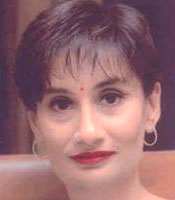 Here's more information about the biography of Shobhana Bhartia, who graduated from the Calcutta University and later, wedded Shyam Sunder Bhartia. This particular gentleman is the chairman of the Rs 14 billion Jubilant Organosys Limited, a Pharma company. Shamit Bhartia, their son, is also a member in the HT Media group. At the same time, he operates lifestyle businesses like Domino's Pizza franchise in the country and a convenience store chain in Bangalore city.
Here's more information about the biography of Shobhana Bhartia, who graduated from the Calcutta University and later, wedded Shyam Sunder Bhartia. This particular gentleman is the chairman of the Rs 14 billion Jubilant Organosys Limited, a Pharma company. Shamit Bhartia, their son, is also a member in the HT Media group. At the same time, he operates lifestyle businesses like Domino's Pizza franchise in the country and a convenience store chain in Bangalore city.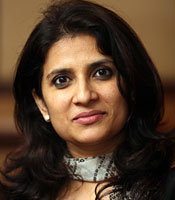 Prior to joining Kinetic Company, Sulajja worked for a period of four years with a well known investment analytics company, BARRA International, based in California. She has been an active participant in setting the operations of the company in India. Throughout her studies, she has been a rank holder. She has always cleared exams with merit. Her name appeared in the toppers list in the SSC examinations and HSC examinations. She graduated from the Pune University. Thereafter, she went to the United States for pursuing further studies. She is an MBA degree holder from the reputed Carnegie Mellon University at Pittsburgh.
Prior to joining Kinetic Company, Sulajja worked for a period of four years with a well known investment analytics company, BARRA International, based in California. She has been an active participant in setting the operations of the company in India. Throughout her studies, she has been a rank holder. She has always cleared exams with merit. Her name appeared in the toppers list in the SSC examinations and HSC examinations. She graduated from the Pune University. Thereafter, she went to the United States for pursuing further studies. She is an MBA degree holder from the reputed Carnegie Mellon University at Pittsburgh.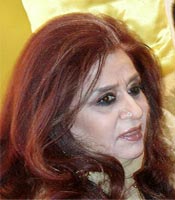 When she went to Teheran along with her husband, she developed a keen interest in beauty treatments. Eventually, she decided to study the cosmetology course. She wanted to be self independent and so she began writing articles for the Iran Tribune on varied subjects. While pursuing studies, she learnt about the harmful effects of chemicals on human body. She studied Ayurveda and believed that it is the best alternative to chemical cosmetics.
When she went to Teheran along with her husband, she developed a keen interest in beauty treatments. Eventually, she decided to study the cosmetology course. She wanted to be self independent and so she began writing articles for the Iran Tribune on varied subjects. While pursuing studies, she learnt about the harmful effects of chemicals on human body. She studied Ayurveda and believed that it is the best alternative to chemical cosmetics.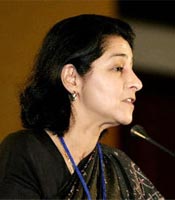 She began her career in the year 1982, when she joined the ANZ Grindlays Bank, which is now known as the Standard Chartered Bank. She took up a variety of banking assignments before moving to Morgan Stanley's India operation. She kept climbing the ladders of success. She played an important role in NYSE listing of Wipro. She was instrumental in facilitating the cellular phone services nationwide through a deal involving the Tatas and Birlas. Last November, she became the Managing Director of the HSBC bank.
She began her career in the year 1982, when she joined the ANZ Grindlays Bank, which is now known as the Standard Chartered Bank. She took up a variety of banking assignments before moving to Morgan Stanley's India operation. She kept climbing the ladders of success. She played an important role in NYSE listing of Wipro. She was instrumental in facilitating the cellular phone services nationwide through a deal involving the Tatas and Birlas. Last November, she became the Managing Director of the HSBC bank.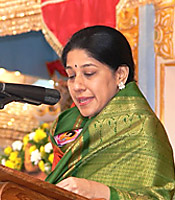 In the year 1986, she planned to join the family business. She was made the General Manager of Tafe (Tractors and Farm Equipment) Company. When she took over the responsibility of furthering the economic wealth and business, the turnover of the Company was Rs 85 cr. Under the expert guidance of her father and the whole hearted support of the team, she brought about a major transformation. She converted Tafe into a hi technology-oriented company, thereby becoming the initial choice of the farmers. There was a period, when the Company had to face a tough time, however; even then, the Company invested a huge amount of over Rs 70 crore in the designing and development of product.
In the year 1986, she planned to join the family business. She was made the General Manager of Tafe (Tractors and Farm Equipment) Company. When she took over the responsibility of furthering the economic wealth and business, the turnover of the Company was Rs 85 cr. Under the expert guidance of her father and the whole hearted support of the team, she brought about a major transformation. She converted Tafe into a hi technology-oriented company, thereby becoming the initial choice of the farmers. There was a period, when the Company had to face a tough time, however; even then, the Company invested a huge amount of over Rs 70 crore in the designing and development of product.